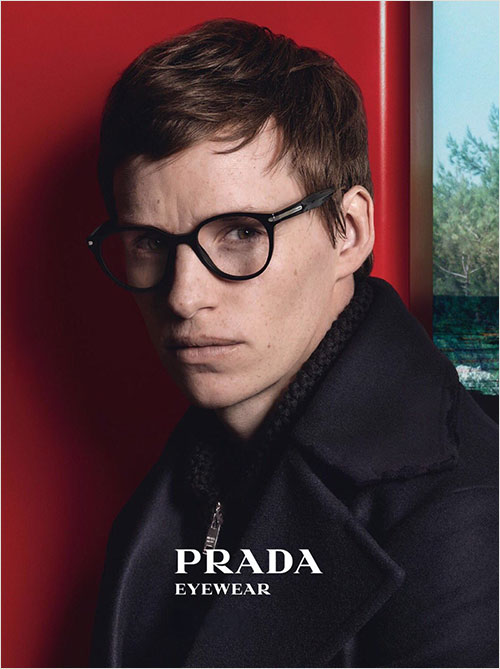The world of art is no longer limited to museums or ordinary canvases—it thunders in the stitching of handmade fabrics, the stress of improvised performances, the radiance of LED installations, and the defiance of reclaimed histories. Through various mediums, artists of color are deconstructing established norms, redefining what and who art can be. Their practice questions power relations, honors the oppressed voice, and turns simple materials into profound pronouncements regarding identity, memory, and resistance. From gushing sculptures that reject consumerism to immersive shows that blur the boundary between spectator and participant, these artists use their medium of choice as a force of revolution. They challenge not only conventions of beauty but also the very systems that have long kept their voices silent. Whether by transgressive fashion, genre-bending films, or portraits that recapture agency, their work resists compartmentalization—it is argumentative, unsettling, and redefining cultural heritage. At this time of deep societal reckoning, their breakthroughs show that art’s future is intersectional, unapologetic, and teeming with potential.
- Janette Oh
Janette Oh is a Brooklyn-based knitwear designer and visual artist transforming textiles into sculptural, emotion-driven narratives. Centering texture as storytelling, her work explores the intersections of craft, material memory, and identity through garments, installations, and tactile objects—art not just worn but experienced. She begins with discarded yarns, textile remnants, and industrial scraps, reconfiguring them through meticulous hand knitting, weaving, and embroidery. These fragments become foundations for pieces that investigate personal and collective memory, resisting strict categorization as fashion. Each project embodies care and intentionality, with textures that evoke emotional states—grief, tenderness, endurance—while balancing fragility and structural precision. Though her past includes collaborations with brands like 3.1 Phillip Lim, Michael Kors, and Proenza Schouler, Janette Oh now prioritizes conceptual depth, approaching garment-making as sculpture and performance design as empathy.
Janette Oh’s interdisciplinary projects amplify her material philosophy. For Liquid Arrangement: Provider at Wave Hill’s Sunroom Project Space, she crafted costumes for performer Soeun, translating themes of bodily autonomy and care into wearable expressions. In Site: Living Room Hours, she designed the visual identity and graphic language for a pop-up library, merging tactile and digital elements to spatialize reading. Her knit-based pieces in the Site 003: Grass Stain group show contributed to an evolving dialogue around materiality, while her practice remains rooted in the unseen labor of handwork and stories embedded in every stitch.
Across mediums, Janette Oh’s design ethos urges audiences to slow down, touch, and feel. She reveals how garments, like emotions, are layered, intricate, and alive—imbued with the emotional resonance of material choices. By grounding her work in nuance, she redefines textiles as vessels of memory and possibility, where every thread carries the weight of lived experience and intentional craft.
- Kenneth Tam
Kenneth Tam’s performance and video pieces deconstruct masculinity, especially among Asian American men, revealing its vulnerability and performative quality. His work frequently involves casting men off Craigslist or Reddit, putting them in close, improvised situations that expose vulnerability under societal norms. The Crossing (2020), performed at The Kitchen, explores Asian American fraternity culture, questioning how rituals such as hazing create bonds through violence. The work begins with a Jay Caspian Kang quote decrying the term “Asian American” as an unstable, frequently meaningless designation—a thread Tam continues to weave. Based on a three-act format, The Crossing delves into the quest for identity, the viciousness of hazing, and the grieving of lost self, reflecting the contradictions of assimilation. Tam points out how these fraternities, once established as refuge on predominantly white campuses, frequently mimic the same systems they initially tried to leave behind.
His writing strips away the posturing of masculinity, exposing the isolation and stress beneath. By centering on Asian American men—a population oftentimes desexualized or marginalized in popular media—Tam compels an accounting with racialized notions of gender. His installations, sometimes using video and sculpture, create immersive worlds where the public has to encounter its own entanglement within these constructs. By his frank, disturbing presentations, Tam dares the world of art as well as broader society to challenge its assumptions on the performance and policing of masculinity.
- Maia Cruz Palileo
Maia Cruz Palileo’s paintings are rich, fantasy-like investigations into Filipino history, memory, and the residual trauma of colonialism. Pulled from colonial records and family tales, their pieces rewrite the Philippines anew in a diasporic narrative, blurring fact and fiction. Some earlier works, such as Afterward (2019), portray classrooms—respectively referencing American re-education drives and Palileo’s grandmother having worked as an English teacher. Loose and yet controlled, their brushstrokes evoke the imprecision of transmitted memories. Palileo’s more recent works appropriate Dean C. Worcester’s dehumanizing ethnographic photographs, reclaiming Indigenous subjects by setting them in kaleidoscopic, dreamlike environments.
In Flores (2020) and Night Crocuses (2021), returning twin figures refer to the colonial past’s doubled nature—what remains and what is lost. Through the Fronds There Were No Stars (2021) conceals ghostly figures amidst tropical greenery, referencing lost ancestors to migration and violence. Palileo’s palette of rich ochres, blues, and bright greens turns Worcester’s clinical imagery into something vibrant and in-your-face. Their solo show The Answer is the Waves of the Sea (2023) at Monique Meloche Gallery carried on this questioning, demonstrating that decolonization as an artistic practice is a constant, necessary gesture.
- Zachary Noah Piser
Zachary Noah Piser is shattering glass on Broadway as the first Asian American actor to take on the full-time lead in Dear Evan Hansen. Formerly the show’s alternate, his official takeover in May 2023 was a milestone moment for Asian representation in theater. Piser’s sensitive performance of Evan—a role not specifically written as Asian—breaks casting conventions that have long kept actors of color out of “race-neutral” roles.
His path to this point has included career highlight performances as Boq in Wicked and Tobias in Sweeney Todd, where he displayed his range of vocals and emotional expression. Piser’s role in Dear Evan Hansen is especially meaningful since the musical is all about feelings of isolation and finding belongingness—a struggle that many Asian Americans go through in largely white environments. Off stage, he speaks up for varied storytelling, arguing that representation must go beyond tokenized roles. His casting marks a turning point in Broadway’s openness to reconsidering who gets to tell universal tales. As theaters are under pressure to diversify, Piser’s career represents the value of visibility—and the talent that has long been present, waiting for its moment.
- Lauryn Levette
Lauryn Levette’s paintings are a kaleidoscope celebration of Black femme power, combining surrealism with unapologetic boldness in creating worlds where oppression is upended. Her paintings make Black women the central figures, eschewing the male gaze and Eurocentric notions of beauty that have long been the backbone of art history. In Sitting On Chrome (2022), Levette depicts a woman holding a knife and hat, her stance emanating brusqueness, while another character reclines with legs spread wide, taking a joint—a moody blues-and-electric greens-lit scene. The work, much of which refigures stereotypes about Black femininity, instead reveals it as varied, not monolithic. Desperado (2023) continues to develop this, having a woman point a weapon at the viewer and interrupting the voyeurism of classical portraiture.
Levette’s compositions eschew passive victimhood, instead putting her subjects in the role of agents of their own narratives. Her use of color—dreamlike but intense—is often—increases the emotional import of each composition, presenting the mundane as mythic. She stresses the value of varied Black storytelling in interviews, arguing that one story cannot capture Black identity. Her second solo exhibition at New Image Art in Los Angeles also solidified her presence as a future star in contemporary art. With her work, Levette not only redefines Black womanhood but also challenges the art world to accommodate its endless permutations.
From paint, performance, textiles, theatre, to digital spaces, they deconstruct monolithic accounts and reconstruct territories where silenced voices demand center stage. Their artworks are not artifacts but acts of resistance: a rebellious appropriation of history, a reversal of gendered conventions, an affirmation of cultural hybridity, or a green reimagining of material waste. Each medium becomes a language of freedom, calling viewers to see beyond the boundaries of tradition and privilege. As these artists redefine the possibilities of art, they light the way ahead—one where innovation is based on equity, and storytelling transcends divisions.
Their combined effect goes beyond galleries and stages, calling the world to see that the future of art is in its power to amplify the silenced, question the given, and celebrate the many ways we live. In their capable hands, each brushstroke, stitch, and scene is a witness to the ability of art not only to represent the world, but to change it













